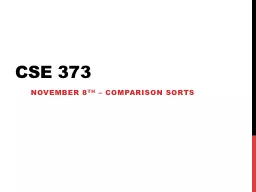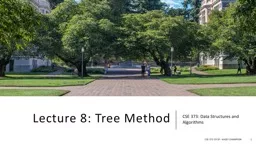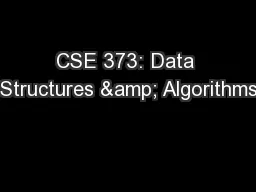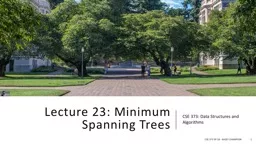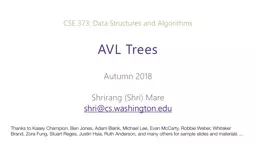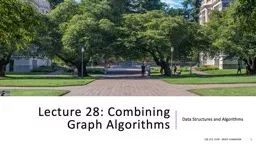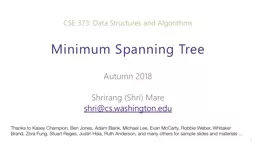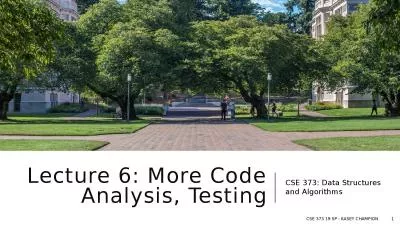PPT-Cse 373 November 8 th – Comparison Sorts
Author : numeroenergy | Published Date : 2020-06-23
Assorted Minutiae Bug in Project 3 files reuploaded at midnight on Monday Project 2 scores Canvas groups is garbage updated tonight Extra credit P1 done and feedback
Presentation Embed Code
Download Presentation
Download Presentation The PPT/PDF document "Cse 373 November 8 th – Comparison S..." is the property of its rightful owner. Permission is granted to download and print the materials on this website for personal, non-commercial use only, and to display it on your personal computer provided you do not modify the materials and that you retain all copyright notices contained in the materials. By downloading content from our website, you accept the terms of this agreement.
Cse 373 November 8 th – Comparison Sorts: Transcript
Download Rules Of Document
"Cse 373 November 8 th – Comparison Sorts"The content belongs to its owner. You may download and print it for personal use, without modification, and keep all copyright notices. By downloading, you agree to these terms.
Related Documents

